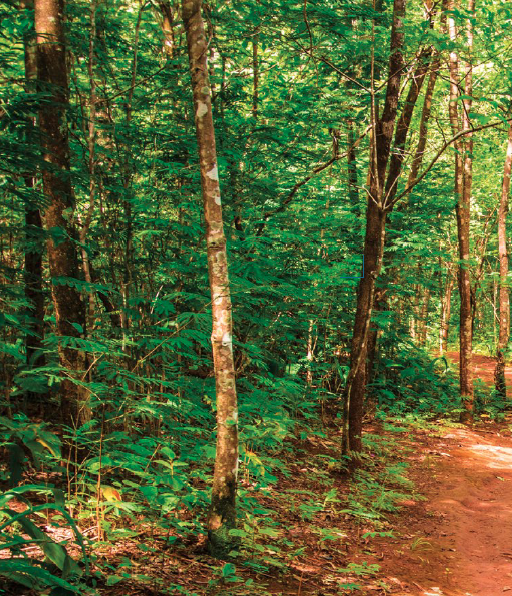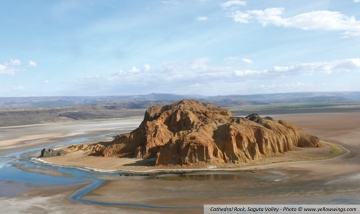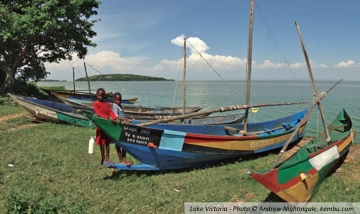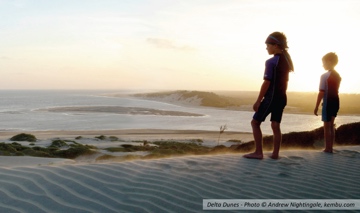Kenya's Sacred Spaces
A land that's home to as many peoples as Kenya, is also home to a myriad of beliefs and traditions. It was a pleasure to look into this, and discover these places believed sacred by the people who live around them.

Mt Elgon
According to the Bagisu people of Mt Elgon, founders of their tribe, Mundu and Sera, came out of a hole in the mountain. Certainly the mountain has plenty of holes: not only one of the largest intact canderas in the world, but also a maze of caves that weaves through its slopes. At 4,200m, Mt Elgon is in the top ten highest mountains in Africa and is thought to be 24 million years old, making it the oldest extinct volcano in East Africa. Mt Elgon’s many peaks and bluffs offer exciting trekking and fabulous views; while hiking up the mountain climbers pass through distinctive layers of alien-looking flora and might spot a number of animal species such as elephants, buffalo, duiker, bushbuck and several kinds of monkey. Of the 300 bird species recorded on the mountain, 40 species are only found on its slopes.
Lake Turkana
The Turkana people call the lake Anam Ka’alakol, or ‘the sea of many fish’; the Samburu people call it Bassor Narok, or ‘black lake’. Hungarian explorer Count Samuel Teleki de Szek named it Lake Rudolf in honour of Crown Prince Rudolf of Austria. In 1975, it was renamed Lake Turkana after the Turkana people, and is affectionately referred to as the Jade Sea for its enticing green glimmer. The world’s largest permanent desert lake is surrounded by volcanic rocks; Central Island, an active volcano, still spurts and spits steam. Nile crocodiles and large turtles live in the lake, along with about 50 species of fish of which 12 are endemic. The area is perhaps best known for the finding of fossils of some of the earliest human ancestors including the almost complete skeleton known as Turkana Boy, giving rise to the name Cradle of Mankind.
Sacred Mijikenda Kaya Forests
The Mijikenda, meaning nine tribes, believe their ancestors migrated south because of conflict with other tribes. Establishing themselves in villages known as Kayas, they fortified the villages with thick forest and buried sacred objects in the earth for protection. Now known as the Sacred Mijikenda Kaya Forests, remnants of these lush and atmospheric forests dot the coast, weaving along the edges of its beaches and bourgeoning from its craggy cliffs. Visitors can enter the sacred forests only with a guide and with permission from the elders. Entry is by traditional precipitous paths; deep inside the forest, dripping with creepers and scented with moss, visitors might be introduced to ceremonial huts, burial sites, places of offerings and houses of the spirits – but the protective magic of the tribe can never be disclosed to outsiders.
Tamara Britten, 09 April 2021
Published also in: The Link: Safarilink's inflight magazine
About the region
Northern Kenya

Vast tracts of desert stretch across Kenya’s remote northern region. Lake Turkana, known as the Jade Sea, slices through the desert. Jagged, forested mountains rise from this stunning yet savage terrain. The region, known as the Cradle of Mankind, is the site of some of the world’s most important prehistoric discoveries.
Read more about Northern KenyaWestern Kenya

Mountainous and fertile Western Kenya is blanketed in lush green plantations of famed Kenyan tea. At its western edge, the region meets Lake Victoria, the source of the Nile. Other highlights include Mt Elgon, Kakamega Forest National Reserve, Ruma National Park, Saiwa Swamp National Park, Cherangani Hills and Kerio Valley.
Read more about Western KenyaNorth Coast

Stretching from Nyali to Malindi, the North Coast is known for its long white beaches, its trading history and its Swahili ruins. Highlights include Tana River Delta, Malindi Marine National Park, Watamu Marine National Park, Arabuko Sokoke Forest, Mida Creek and Gede Ruins.
Read more about North Coast